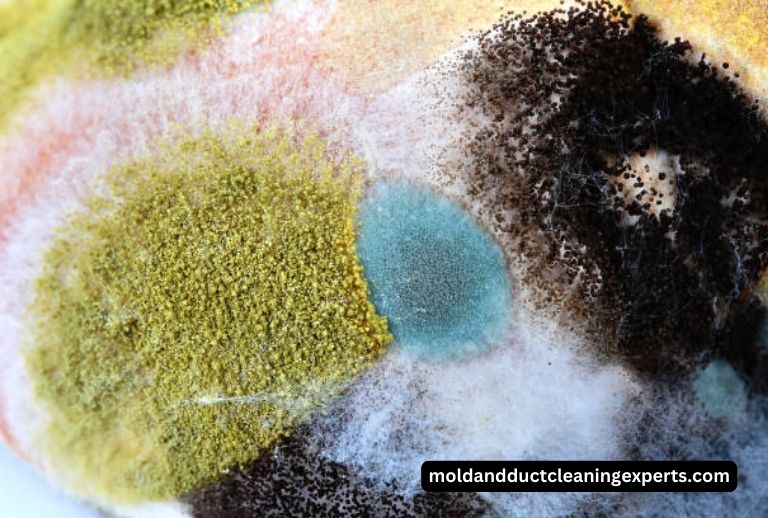
Mold is a common fungus found almost everywhere, indoors and outdoors. It thrives in warm, damp, and humid conditions, and reproduces by making spores. Temperature plays a significant role in mold growth and sustainability, affecting both its rate of reproduction and survival. In this article, we’ll find out that at what temperature does mold die. We will explore the specific temperatures that can prevent mold growth and even destroy it, ensuring your home remains a safe haven.
Keep reading to learn about how temperature affects mold and how you can use this information to protect your property. And if you are struggling with persistent mold in your home or office, our team of experts at Mold & Duct Cleaning Experts is here to help. With advanced techniques and thorough knowledge, we’ll ensure your space is mold-free.
At What Temperature Does Mold Die?
Mold dies at temperatures above 140°F (60°C) when exposed consistently for some time. This high temperature disrupts the mold’s cellular structure, leading to its death.
Mold spores require three things to grow: moisture, a food source (like wood or drywall), and the right temperature. Most molds need temperatures of 70°F (21°C) to 90°F (32°C) to grow. However, some molds can grow in temperatures as low as 32°F (0°C) or as high as over 100°F (38°C).
What’s the Optimal Temperature for Mold Growth?
Mold is not just a simple headache; it’s a living organism with specific needs for growth and reproduction. The optimal temperature for mold to flourish is between 77°F (25°C) and 86°F (30°C). This range is often found indoors, especially in areas lacking proper ventilation or with high humidity levels. Warmth is a crucial factor for mold spores to germinate and multiply quickly. It provides the perfect environment for mold to digest organic materials and expand its presence.
At What Temperature Mold Growth Stops?
Contrary to popular belief, mold doesn’t just disappear in the cold. It can survive in temperatures as low as 32°F (0°C), which is the freezing point of water. However, mold growth significantly slows down as the temperature drops, eventually leading to a state of dormancy rather than active growth. This means that while mold may not be eliminated in colder climates, its ability to cause damage is greatly reduced.
How Does Heat Affect Mold?
When it comes to eradicating mold, heat is a powerful ally. At temperatures above 122°F (50°C), the cellular structure of mold begins to break down. This breakdown is not instantaneous; it requires consistent exposure to such high temperatures to be effective. By maintaining a temperature above this threshold, you can ensure that mold is not just removed but destroyed, preventing any chance of regrowth.
How to Control Mold with Temperature
One of the most effective strategies for mold removal is heat treatment. This method involves maintaining a consistent temperature above 140°F (60°C) for 20-25 minutes. This level of heat is sufficient to eradicate mold spores and can be an integral part of a comprehensive mold remediation plan. On the other side, extreme cold can also be used to combat mold. Temperatures below 32°F (0°C) can kill mold spores or stop their growth, providing another method for mold control.
Moreover, controlling indoor temperatures and reducing humidity levels are key to preventing mold growth. Here are some tips for effective mold control:
- Maintain a Dry Environment: Use dehumidifiers and air conditioners to keep humidity levels below 60%.
- Ventilation: Ensure proper ventilation in areas like bathrooms and kitchens where moisture is common.
- Insulation: Properly insulate pipes, windows, and exterior walls to prevent condensation.
- Temperature Control: Keep indoor temperatures moderate, preferably below 77°F (25°C), to slow down mold growth.
Why Choose Mold & Duct Cleaning Experts for Effective Mold Removal
Struggling with mold issues? Don’t let mold compromise your health and home. Our team at “Mold & Duct Cleaning Experts” is equipped with the latest technology and in-depth knowledge to tackle even the most stubborn mold problems. Whether it’s your home, office, or industrial space, we ensure a thorough cleanup that not only removes mold but also prevents future growth.
Take action today! Contact us for a comprehensive mold assessment and customized solutions that fit your needs. Remember, a mold-free environment is just a call away. Visit Mold & Duct Cleaning Experts to schedule your expert mold remediation service.
FAQs
What Temperature Kills All Mold?
Mold is effectively killed when exposed to temperatures above 140°F (60°C) for a sustained period, typically around 20-25 minutes. This level of heat disrupts the mold’s cellular structure, leading to its death.
What Temperature Will Stop Mold?
While mold growth can be halted at temperatures below 32°F (0°C), which causes it to become dormant, the temperature that will stop mold growth entirely is above 140°F (60°C), as it kills the mold spores.
Does Mold Die in Cold Temperatures?
Mold does not necessarily die in cold temperatures; it becomes dormant. However, prolonged exposure to freezing temperatures below 32°F (0°C) can kill some species of mold spores over time.
Will Boiling Water Kill Mold?
Boiling water, which is at 212°F (100°C), can kill mold on surfaces where it’s safe to use such high temperatures. The heat from boiling water can disrupt the mold’s cellular structure, similar to other high-temperature treatments.

